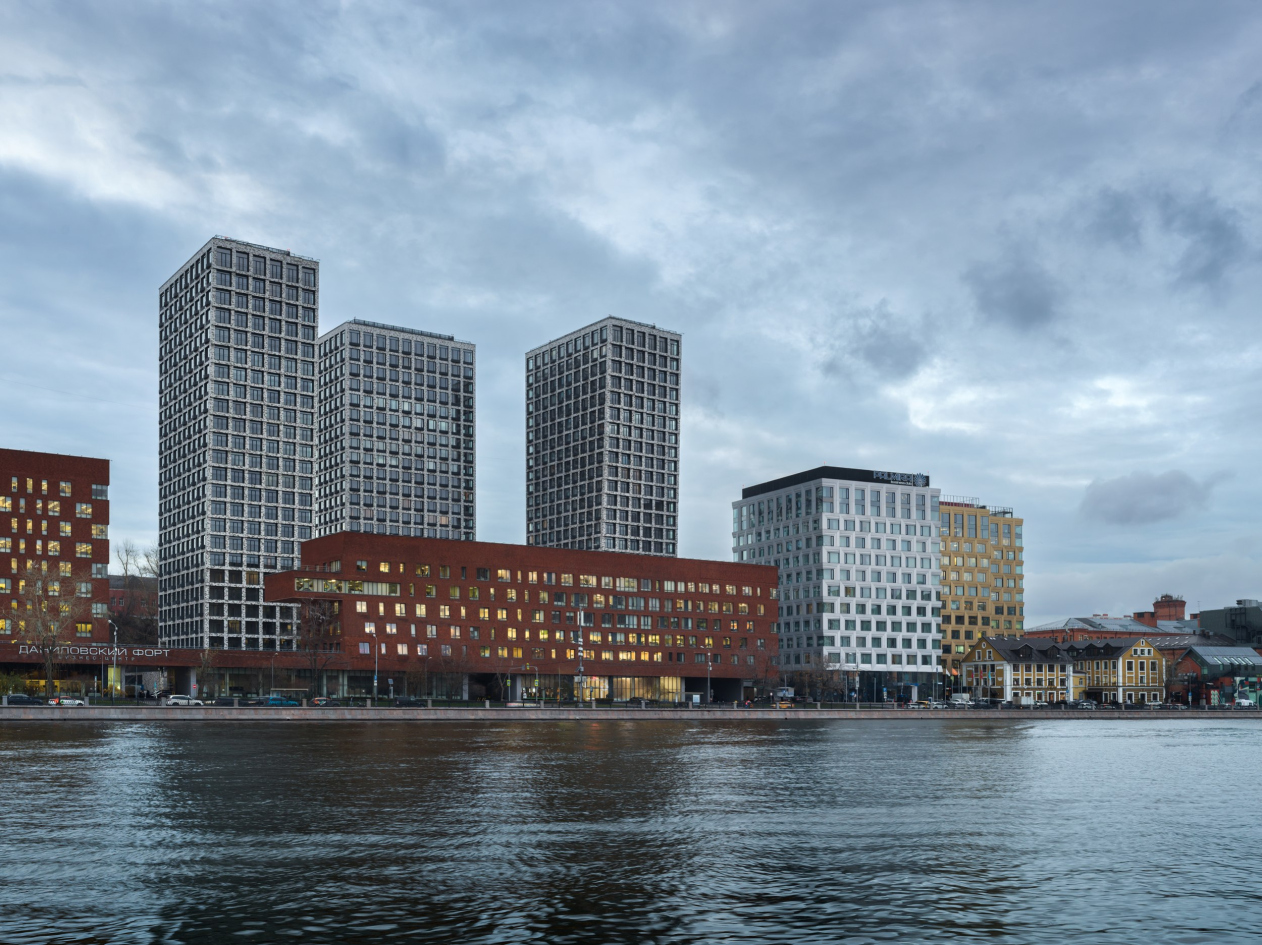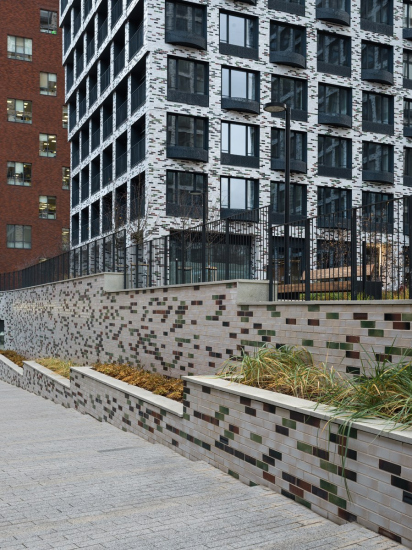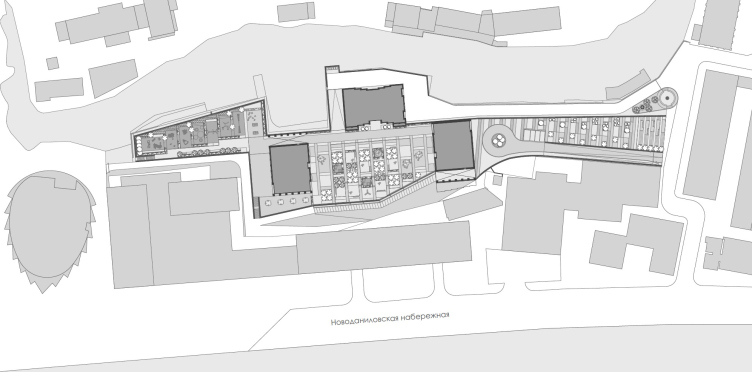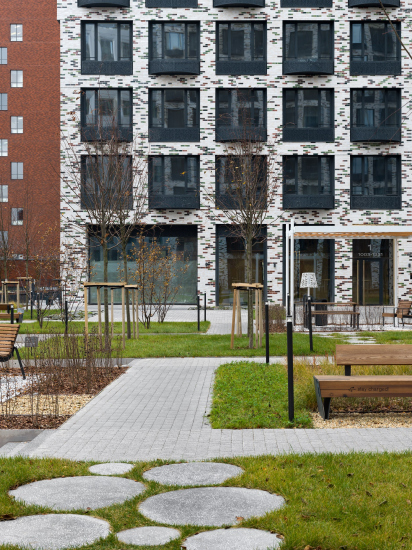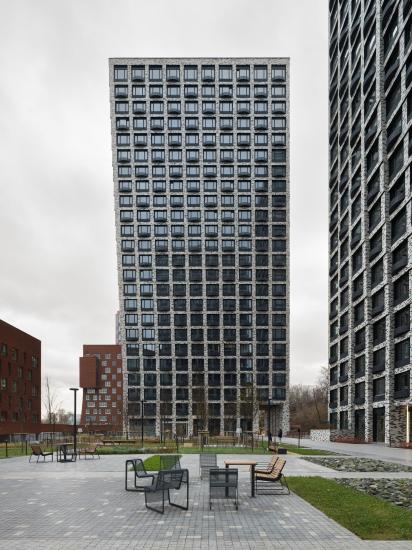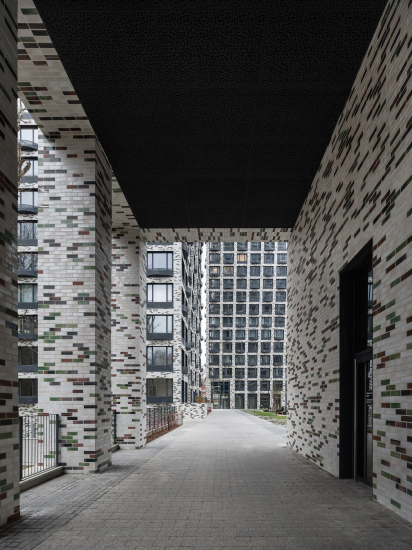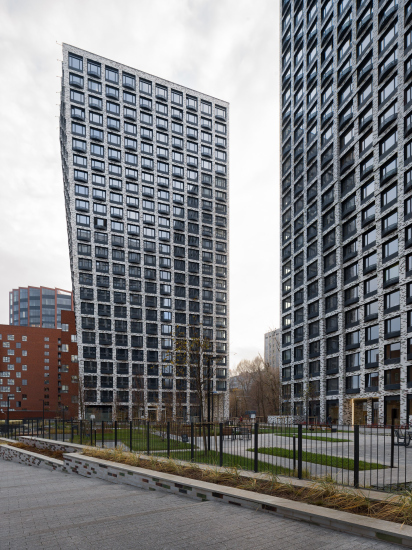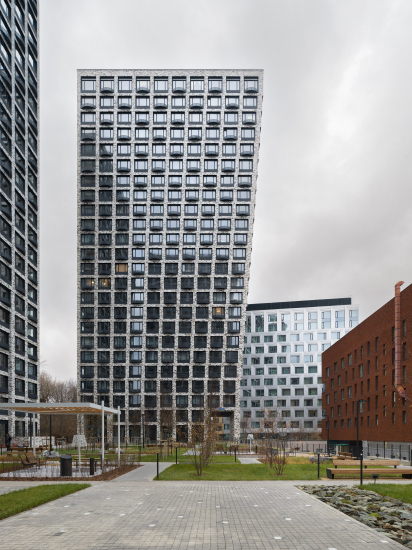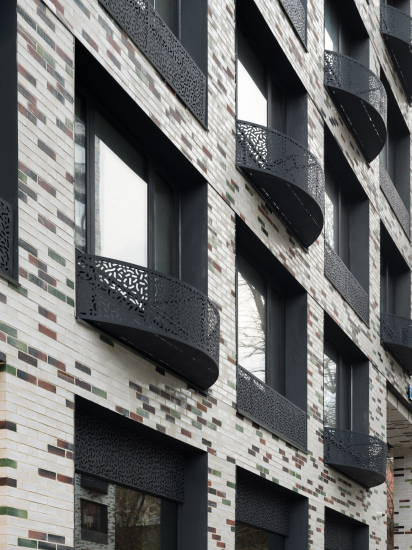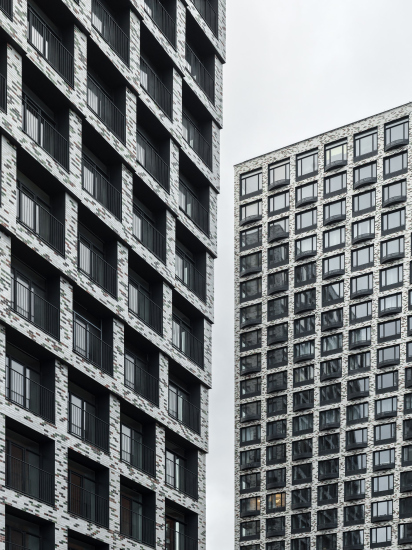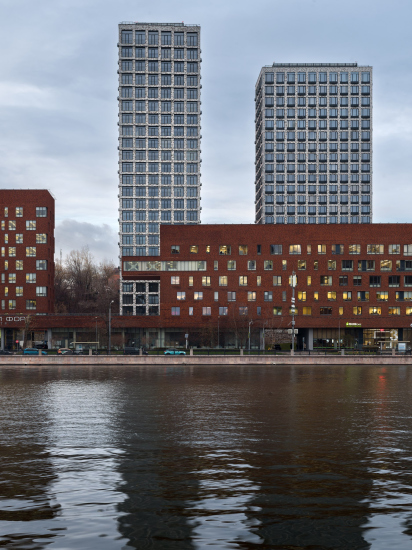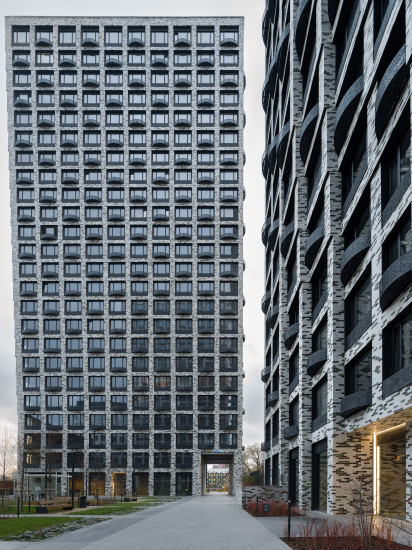The history of the former Danilovsky Manufactory territory and the areas around it is an example of the development of this trend; buildings are acquiring greater height and vertical proportions. Initially, there was “Danilovsky Fort” business center, followed by the reconstruction of the manufactory itself into a cluster of creative industry companies, with restaurants and design bureaus. Then, between them, yet another office building, “Danilov Plaza” emerged, 12 floors high. Still a bit later, on the other side of the “Fort”, another office building, the 18-story DM Tower, appeared (a detailed overview of the area can be found here). Thus, we see that the fragment of Novodanilovskaya Embankment, the one opposite ZIL automotive plant, now ZILArt, is rapidly developing, shifting from a horizontal direction to a vertical one. A veritable “host” of new buildings has grown here, filling the entire area quite densely.
Residential complex “Novodanilovskaya 8”
Copyright: Photograph © Dmitry Chebanenko / provided by ADM architects
The residential complex “Novodanilovskaya 8” is the first large residential complex in this area, standing amidst office centers. At the same time, it is the tallest, consisting of three towers with a height of 100 meters placed on a podium. It is separated from the riverside boulevard by “Danilovsky Fort”, and to the west, it faces a slope approximately 17 meters high from the houses along the Varshavskoe Highway; essentially, the site is squeezed between the slope and the office complex. The towers peek out from behind the “fort”, marking, after 15 years, a new scale of development in this area; in a way, they resemble the antennae of a giant colorful snail from some retro seventies cartoon. The “Fort” and the residential complex are entirely different, but similarities still can be found. For example, in both cases, the facades facing the river have a bent shape, albeit in different ways – perhaps because many years ago, Andrey Romanov and Ekaterina Kuznetsova worked on “Danilovsky Fort” building when the two architects were still a part of Sergey Skuratov’s team?
Additionally, according to the concept of Moscow’s chief architect Sergey Kuznetsov, the residential complex “Novodanilovskaya 8” and “Danilovsky Fort” are now connected by a pedestrian link. From the side of the Danilovsky Manufactory, one can enter via a staircase to the public square on the roof of the northern part of the podium, then bypass the towers on the left, descend the stepped ramp, and exit onto the embankment through the fort’s arch.
On the right side, there are shop windows located in the outer contour of the podium, the remaining part of which is designated for parking. When the rental spaces are occupied, the passage is expected to transform into a full-fledged pedestrian city street, an extension of the Manufactory’s public life.
On the right corner before the entrance to the square, there is an art object – a barrel inherited from the industrial production that was once located here before the construction of both the fort and the residential complex. Its preservation as a “memory of the place” was the subject of a separate agreement when the territory was purchased by SAMOLET Group.
The outline of the plot, mirrored by the podium, is not just elongated but also jagged, zigzag-shaped. The three towers are positioned roughly at its geometric center and are almost symmetrical. It could even be said that the plan is laid out like a “manor”, as was customary in Moscow estates: a tower with a longitudinal plan in place of the “palace” and transverse wings in place of the outbuildings. The similarity at the plan level is complemented by the smooth recessions on the lower floors of the central tower, giving the plan the shape of an hourglass.
The masterplan. The apartment complex “Novodanilovskaya 8”
Copyright: © ADM
There are three courtyards: the aforementioned public square, with spaces for shops and cafes on the ground floor of the tower facing it; the central courtyard between the buildings – a kind of courtyard for the relaxation of the residents.
And, finally, the southern courtyard, situated in a narrow trapezoidal “appendix” is designed for children and houses various playgrounds. It is sheltered by the slope, the business center, and partly by the southern tower, but it extends meridian-wise and shifts to the west, so there is plenty of sunlight in it.
A thoroughfare between the courtyards is created through two mirror-symmetrical pylons at the ends of the side towers. One can enter from the north, from the public square on the roof of the podium, into the central courtyard through one pylon, then cross it diagonally to the right and, through another identical pylon, reach the distant “children’s” courtyard. The movement gains a distinctive feature, and the courtyard space becomes diverse and multi-compositional.
In the architecture of the towers, ADM architects employ a favorite technique: the plasticity is achieved through the gradual but consistent shifting of floors. One of the early examples of its use by the authors was the Discovery Residential Complex in 2015. Now, Romanov and Kuznetsova continue to develop the theme, but this time in glass, as seen in High Life on Letnikovskaya or the Famous Tower in the second phase of the Fili Towers Residential Complex. On “Novodanilovskaya 8”, the floor grid is marked by a light-colored of piers and structural floors of equal width. This allows the smooth expansion, growth, and overhangs to be clearly seen, even accentuated, especially when viewed in profile. This is how a tree grows, leaning towards the sun.
The technique employed helps to make the towers, fundamentally simple and honest, look slightly more sculptural.
For high-rise buildings – and this is the typology within which we are now working a lot, as it is popular in modern Moscow – silhouette is very important. In essence, the architect’s task is to work with volume, to “mold” the form, taking into account angles and views, first of all from afar, but also from near points. That is why we like the technique of cell displacement very much; it is quite accessible from the point of view of construction and at the same time allows us to form accents and revitalize the plastic.
The paradoxical effect of this upward expansion challenges our habitual perception of towers traditionally narrowing into a pyramid or spire. Here, they unfold, akin to a tree or a flower; there’s a defiance of gravity as the buildings grow in a way that seems contrary to natural expectations.
The smooth expansion is complemented by texture: the walls are clad in glazed tiles, with white as the main color and additional shades of green and reddish, evoking a Modernist feel. The white background serves to distinguish the towers from the prevailing terracotta-red tone in the area, including the facades of the Danilovsky Manufactory and DM Towers. Meanwhile, the reddish and green accents respond to the surroundings. The architects share that they carefully selected and rejected options for shades, going through five or seven iterations.
Another detail is the black openwork boxes for air conditioners. Curved and straight shapes alternate in a checkerboard pattern, adding relief and rhythm. The simple pattern of perforated metal rhymes with the inclusions of colored tiles.
Undoubtedly, the three towers on the podium mark a new stage in the development of Moscow’s urban space. Over the years, they have practically become a symbol of our time, or at least one of the popular formats for new Moscow housing. They are grand and often emerge in confined conditions, in tight surroundings – very modern, recent, and designed by renowned architects. It was not easy to fit these towers into such an environment. Nevertheless, they have found their place: tall, grid-like, symmetrical, gently leaning toward the river – a new urban growth.

